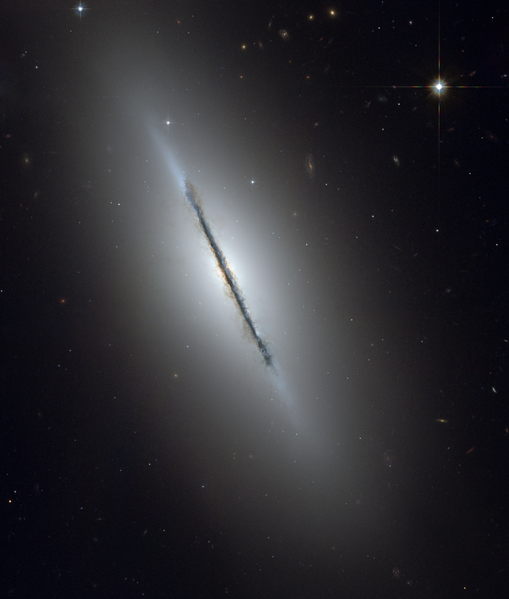tóng-àn:Ngc5866 hst big.png

Seng khoàⁿ chiàm-liōng: 509 × 599 siōng-sò͘. Kî-thaⁿ--ê kái-sek-tō͘: 204 × 240 siōng-sò͘ | 408 × 480 siōng-sò͘ | 652 × 768 siōng-sò͘ | 870 × 1,024 siōng-sò͘ | 1,739 × 2,048 siōng-sò͘ | 3,190 × 3,756 siōng-sò͘.
Guân-pún ê tóng-àn (3,190 × 3,756 siōng-sò͘ , tóng-àn chiàm-liōng: 25.78 MB, MIME luī-hêng: image/png)
Chit--ê Wikimedia Commons--ê tóng-àn ū khó-lêng hō͘ kî-thaⁿ--ê choan-àn ēng tio̍h. Chia sī chit--ê tóng-àn i--ê soat-bêng.
|
Khài-iàu
| Soat-bêngNgc5866 hst big.png |
English: From original NASA press release:
And from the image's page:
|
| Ji̍t-kî | |
| Chhut-chhù | |
| Chok-chiá | NASA, ESA, and The Hubble Heritage Team (STScI/AURA) |
| 其他版本 | File:Ngc5866 hst big.jpg |
Siū-khoân
| Public domainPublic domainfalsefalse |
This file is in the public domain because it was created by NASA and ESA. NASA Hubble material (and ESA Hubble material prior to 2009) is copyright-free and may be freely used as in the public domain without fee, on the condition that only NASA, STScI, and/or ESA is credited as the source of the material. This license does not apply if ESA material created after 2008 or source material from other organizations is in use.
The material was created for NASA by Space Telescope Science Institute under Contract NAS5-26555, or for ESA by the Hubble European Space Agency Information Centre. Copyright statement at hubblesite.org or 2008 copyright statement at spacetelescope.org. For material created by the European Space Agency on the spacetelescope.org site since 2009, use the {{ESA-Hubble}} tag. |
說明
添加單行說明來描述出檔案所代表的內容
Merceksi galaksi
在此檔案描寫的項目
描繪內容 繁體中文
Tóng-àn ê le̍k-sú
Chhi̍h ji̍t-kî/sî-kan, khoàⁿ hit sî-chūn--ê tóng-àn.
| Ji̍t-kî/Sî-kan | Suè-tiunn-tôo | Tshùn-tshioh | Iōng-chiá | soat-bêng | |
|---|---|---|---|---|---|
| hiān-chāi | 2009-nî 2-goe̍h 16-ji̍t (pài-it) 18:38 |  | 3,190 × 3,756(25.78 MB) | Spencer | {{Information |Description={{en|1=From original NASA press release: :This is a unique view of the disk galaxy en:NGC 5866 tilted nearly edge-on to our line-of-sight. Hubble's sharp vision reveals a crisp dust lane dividing |
Tóng-àn sù-iōng ê chōng-hòng
ē-kha ê ia̍h ū iōng tio̍h chit ê iáⁿ-siōng: